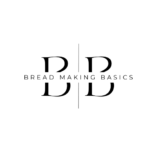This site may contain affiliate links to products. We may receive a commission for purchases made through these links.
Bread-making is a beautiful blend of science, artistry, and patience. With the right techniques, you can transform basic ingredients into heavenly loaves that fill your kitchen with irresistible aromas. Whether you’re a beginner or a seasoned baker looking to hone your skills, understanding and mastering essential bread-making techniques is key. I will delve into the fundamental techniques that will elevate your bread-making prowess and help you achieve consistent, delectable results.
- Kneading: The Foundation of Gluten Development
Kneading is a crucial technique that helps develop gluten—the protein responsible for giving bread its structure and elasticity. Start by combining your ingredients, then turn the dough out onto a lightly floured surface. Push the dough away from you using the heel of your hand, then fold it back and repeat. Continue this rhythmic motion, adding more flour if needed, until the dough becomes smooth, elastic, and slightly tacky. Proper kneading ensures a light, airy crumb and a desirable texture in the final loaf.
- Proofing: Allowing the Dough to Rise and Develop Flavor
During proofing, the dough undergoes fermentation, where yeast or sourdough cultures convert sugars into carbon dioxide, creating air bubbles that leaven the bread. To achieve optimal proofing, place the dough in a warm, draft-free area, covered with a damp cloth or plastic wrap. The duration and temperature of proofing depend on the recipe and desired results. Observe the dough’s volume and texture, performing a gentle poke test to ensure it’s ready for the next step.
- Shaping: Transforming the Dough into Beautiful Loaves
Shaping is where creativity meets technique. Begin by gently degassing the proofed dough to remove excess carbon dioxide. Depending on the desired shape—boule, batard, baguette, or rolls—follow specific techniques to shape the dough into a tight, evenly surfaced loaf. Tuck and roll, fold and seal, or twist and stretch, all while maintaining tension to ensure an even rise and a well-defined shape.
- Scoring: Enhancing Aesthetics and Controlling Expansion
Scoring involves making deliberate cuts on the surface of the dough just before baking. This technique serves multiple purposes: it allows controlled expansion, releases steam, and creates stunning patterns. Use a sharp blade or bread lame to make swift, decisive cuts at a slight angle or in intricate designs. Experiment with different patterns to achieve various effects. Proper scoring enhances oven spring, resulting in a visually appealing loaf with an open crumb structure.
- Baking: Achieving the Perfect Crust and Texture
Baking transforms the shaped dough into a fragrant, golden loaf. Preheat your oven to the specified temperature, ensuring it’s fully heated. Place the dough on a preheated baking stone, dutch oven or sheet pan to promote even heat distribution. Creating steam during the initial stage of baking helps develop a crisp crust. This can be achieved by placing a pan of water in the oven, misting the dough with water, or baking in a dutch oven. Bake until the loaf reaches the desired color and internal temperature, allowing the bread to cool before slicing.
Bread-making techniques are the building blocks of artisanal loaves that tantalize the senses and bring joy to the table. By mastering kneading, proofing, shaping, scoring, and baking, you can elevate your bread-making skills and create exceptional bread at home. Remember, practice, observation, and experimentation are key to refining your techniques and achieving consistent, delicious results. So, roll up your sleeves, embrace the artistry of bread-making, and let your creativity rise alongside the dough as you embark on this delightful culinary journey.
